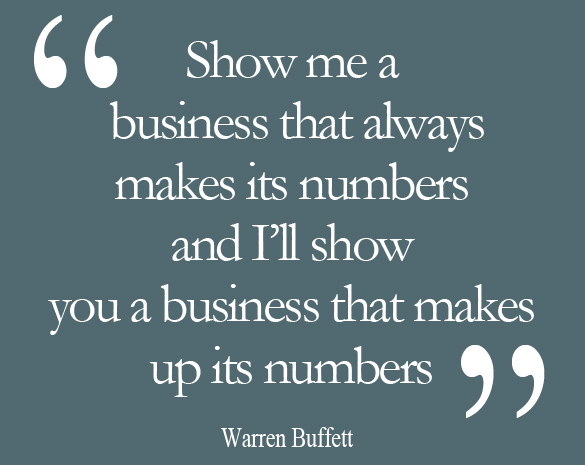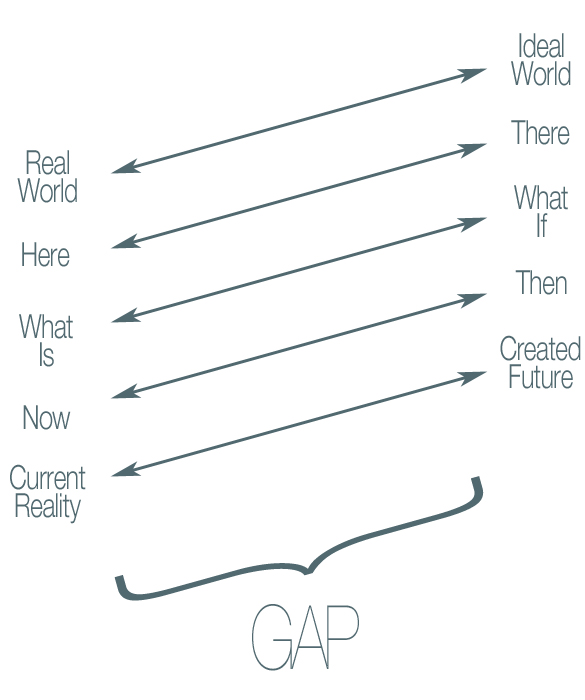‘Mind the gap’ is a phrase that will be familiar to passengers of subway systems the world over. While clearly a warning in the context of passengers crossing the gap between the station platform and the train door, the same notion potentially holds the key to triggering creative tension and providing a call to action in many other settings.
We don’t like ‘gaps’. On a personal level we don’t like inconsistencies between ‘what is’ and ‘what we want it to be’; what psychologists call, thanks to Leon Festinger, Cognitive Dissonance – that uncomfortable feeling we get when we internally hold conflicting ideas or expectations simultaneously. When confronted with this feeling we are compelled to reduce this dissonance, to reconcile the inconsistencies. The question is; do we actively change our attitudes, beliefs and actions to create the outcomes we want, or do we, consciously or unconsciously, accept and rationalise how things are and find ways to explain away ‘how it is’?
In organisations we don’t like ‘gaps’. Again, we are driven to reduce these inconsistencies. However, there are many more extrinsic forces working on us to avoid these gaps; one look at the month-end, quarter-end, or more acutely, year-end activity to ‘hit the numbers’ demonstrates the point. Unfortunately, these extrinsic motivators – measures, incentives, ‘carrots’ and ‘sticks’ – can create a bias towards ‘rationalising how things are’ rather than putting the creative energy into changing things and ‘creating the outcomes we want’. In some companies, if we could channel the creativity away from massaging the targets or coming up with excuses for why we didn’t deliver, and into doing things differently, we’d have a lot more breakthroughs in performance!
‘Gaps’ are inevitable. The Law of Change tells us that we could never predict things so precisely so as to avoid them, the Law of Perspective tells us that different individuals and organisations will respond differently to them. And with a fixed mindset, or incentives that perpetuate more of the same, ‘gaps’ are shied away from or, worse still, denied and hidden. Where disconnected, functional targets, measures and plans exist these tensions can reinforce silos and focus energy internally on parochial point-scoring and a@#-covering. Breakthrough objectives without the requisite alignment and coordination can be dangerous. We call this a ‘left-to-right’ approach; which anchors the tensions to the current realities, exerting a restraining pressure on aspirations and a watering-down of any expectations of a different result.
Approached differently, from ‘right-to-left’ there’s an opportunity to use these ‘gaps’ and the creative tension they develop to motivate action. Leadership need to stand in the future we are creating, and look back at our current reality; creating the bridge to make our Ideal World our Real World.
Building a shared understanding of the future we are creating – the picture and the story of the outcomes on the ‘right-hand-side’ – is critical to making this ‘created future’ the anchor for our creative tensions, pulling people, teams and the organisation towards it and overcoming the inertia of the current reality. This shared meaning and sense of purpose cannot be achieved by hanging a brass plaque of the ‘Vision’ in reception. For people to understand and engage with the created future – and what and how they can contribute to building it – there needs to be a liberating structure that balances both clear direction and enough space for creativity and involvement.
Good strategies create ‘gaps’, and the organisational capabilities we build to realise those strategies – attitudes, skills, behaviours, decision-making processes, cultural environment, etc – need to be geared to exploiting the concomitant tensions, within and between individuals and teams. To shrink the size of the ‘gap’ and take advantage of the creative tension, we need both the broad and compelling created future that provides direction and the specific goals that translate that strategy into action.
We have a choice whether the tension between our goals and our realities becomes destructive or constructive. Either way, ‘Mind the Gap’!



Comments (3)
Comments are closed.